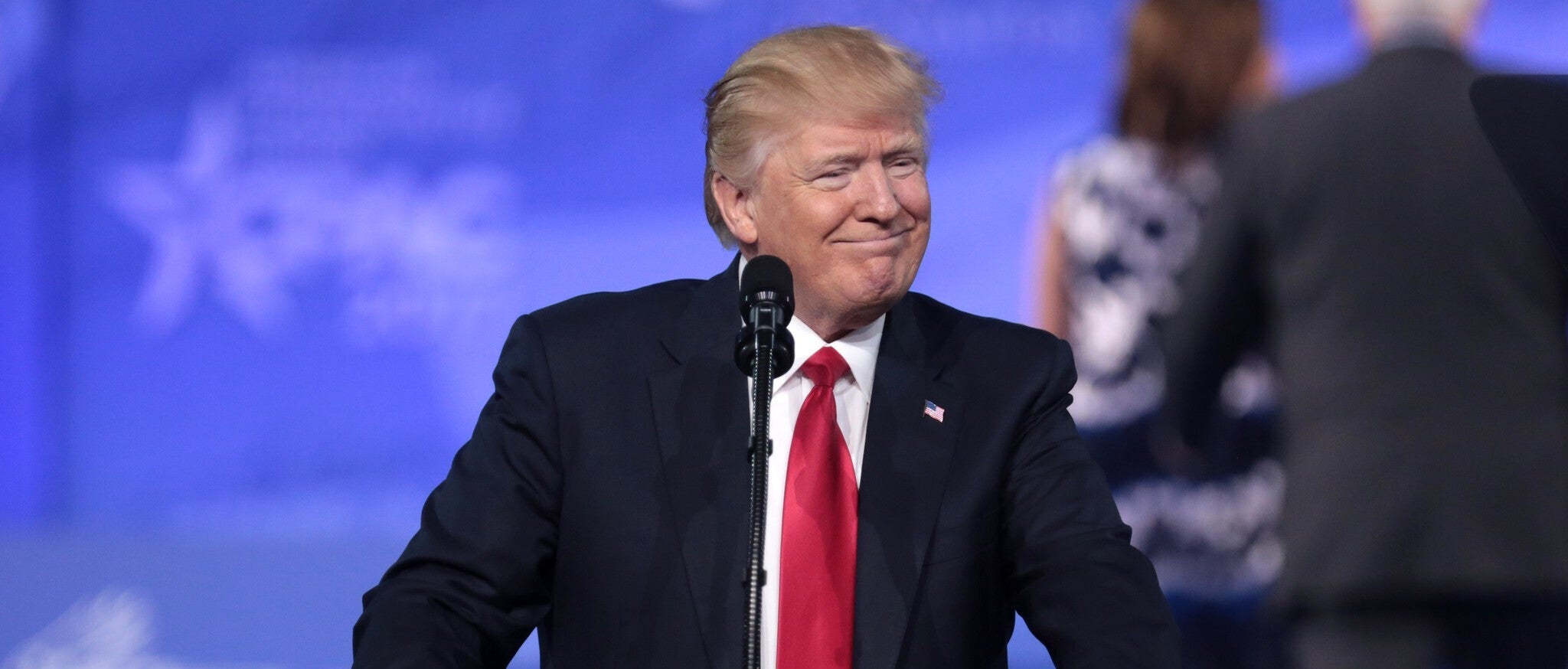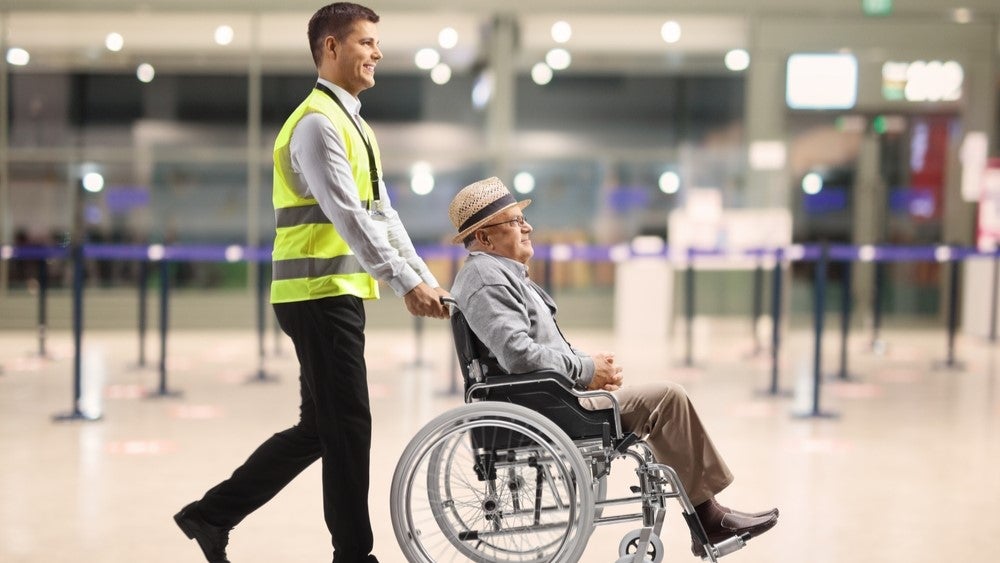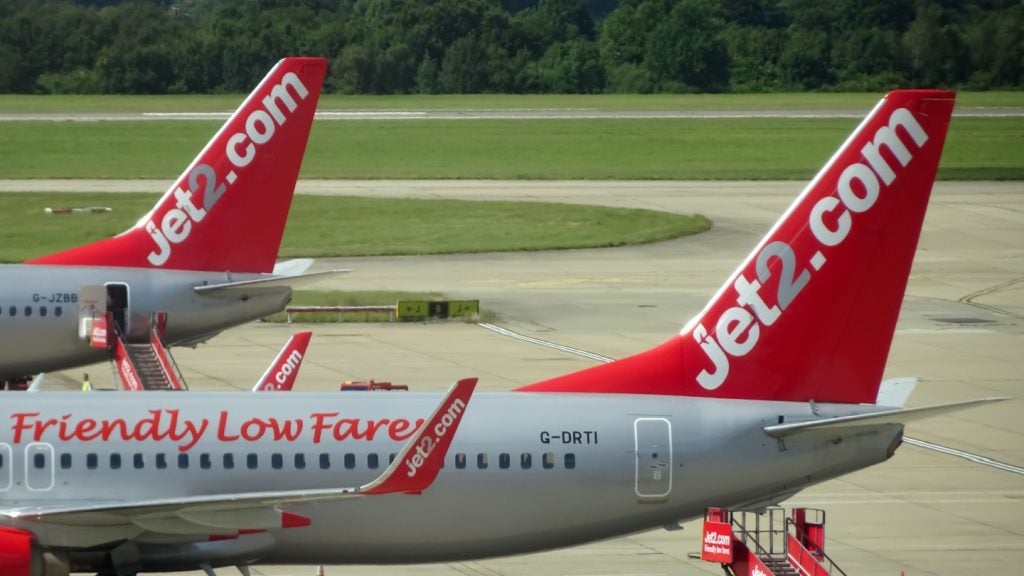
As Joe Biden and Donal Trump kick off the last week of their presidential campaign ahead of Tuesday’s general election, aviation stakeholders and employees are bracing for a big decision that could determine the future of their sector.
Four years since taking over the White House, President Trump is looking to secure another mandate to the detriment of his Democratic opponent Biden.
Despite their radically different views, the two have similar agendas when it comes to the immediate future of the aviation sector, whose revenues have dramatically plummeted since Covid-19 hit. Both have mentioned renewing or creating a new relief package for members of the industry – particularly airports and airlines – ahead of more, tougher months of limited activity.
But this is as far as their similarities go. President Trump will be marching through to election day having led airlines to peak revenues last year, imposed travel bans and kept a flourishing aircraft manufacturing sector. Meanwhile, Biden appears to have a more sustainable consciousness promising new zero-emission targets amidst increased funding for airport development.
Those involved in US aviation are now being asked to pick the candidate who promises the best possible future after a year to forget. But what will the new president inherit from the previous mandate and what is required from the future administration?
President Trump’s impact on the aviation sector
Figures from the International Air Transport Association released last year show that before the pandemic US aviation was riding the wave of high revenues, booming traffic numbers and overall economic prosperity. Air transport contributed some 4.2% of the national gross domestic product in 2018, with gross value added of $779bn and 6.5 million jobs created directly or indirectly.
How well do you really know your competitors?
Access the most comprehensive Company Profiles on the market, powered by GlobalData. Save hours of research. Gain competitive edge.

Thank you!
Your download email will arrive shortly
Not ready to buy yet? Download a free sample
We are confident about the unique quality of our Company Profiles. However, we want you to make the most beneficial decision for your business, so we offer a free sample that you can download by submitting the below form
By GlobalDataYet according to Bhanu Choudhrie, founder of aviation training solutions provider Alpha Aviation Group, these successes were achieved in spite of President Trump’s policies rather than thanks to them. “President Donald Trump’s campaign in 2016 was noted as a platform with fundamental ideals which would have an important impact on the aviation industry during his term,” he says, mentioning his feud with China, immigration and protectionism as the key traits.
“Four years since his inauguration, President Trump’s actions have proven an impact on aviation to be true.”
WATCH: President Trump signs executive order withdrawing U.S. from Trans-Pacific Partnership #TPP pic.twitter.com/87HavqMhi5
— CSPAN (@cspan) January 23, 2017
Withdrawing from the Trans-Pacific Partnership in 2017 was one of his most controversial decisions, which Choudhrie says came “at a cost of access to new routes for the US aviation industry”, leaving the US’s role in the Asia-Pacific region uncertain.
Paul Weisbrich, managing director of investment banking at D.A. Davidson adds that while not directly responsible for it, in his mandate Trump has failed to revitalise the country’s struggling FAA. “The FAA is one of those perennially underfunded areas,” he says. “It’s like a can that keeps getting kicked down the road and the problems it has are going to keep on coming.”
An issue that has persisted, he says, for the past three administrations, it’s currently exacerbated by new cybersecurity challenges and the rise of unmanned aircraft in the US commercial aviation.
“Whoever is president next is going to inherit an underfunded FAA in a pandemic with a budget under a lot of pressure but several other issues,” he comments.
Trump’s actions during the Covid-19 pandemic
The past four years were almost entirely outshined by Trump’s coronavirus bailout package for the sector, which received over $60bn between airlines and airports. “Pre-Covid, airlines were making money for the first time in decades, signing up for many brand-new planes and it plummeted completely when people stopped flying,” says Weisbrich. “Most firms I work with say that Trump’s bailout package has saved jobs, but now that it has worn off many companies would very much like to have a second one after the election.”
The United States will be powerfully supporting those industries, like Airlines and others, that are particularly affected by the Chinese Virus. We will be stronger than ever before!
— Donald J. Trump (@realDonaldTrump) March 16, 2020
A saving grace from airlines’ perspective, the initiative was however widely criticised by those who believe that declaring them bankrupt was a better solution. One such person is John Engle, president of private investment firm Almington Capital Merchant Bankers, who comments: “Unlike the auto industry bailout, which largely wiped out the existing shareholders, the Trump rescue packages preserved both management and equity from the axe. That will have long-term consequences for the industry.”
He says that this has led to airlines living in a “new normal” situation that is going to exacerbate problems such as oversupply and economic returns in the aftermath of the crisis. “The longer Covid-19’s impact lingers, the harder it will be for airlines to return to stable, sustainable operations,” he adds. “Trump’s ultimate legacy remains to be seen. He may get credit for saving the industry from chaos, or he may have simply delayed the inevitable.”
Echoing his words, Alpha Aviation’s Choudhrie blames the Trump administration for putting “massive amounts of pressure” on the sector to help and contribute with tracking and tracing the spread of the virus on flights. “These actions also lacked consideration for how data protection regulations impact airline customer bases and compromise the aviation industry’s international relationships for adhering to data privacy laws abroad,” he claims.
“Instead of working with the airlines to keep the industry operating, President Trump subjected the aviation industry to significant fines and grounded aircraft. This has had a massive hit on the whole aviation industry from travel agents, to aircraft mechanics, baggage staff, pilots and cabin crew.
What will the new administration need to do?
The short answer is a whole lot of things.
For D.A. Davidson’s Weisbrich, efforts will need to focus on economic recovery as well as saving the FAA, improving its work on safety and ensuring that Boeing’s 737Max aircraft enters service in December.
“We need to make sure that the next US President stays on top of this situation as it’s national imperative that we keep Boeing healthy,” he says. “The future President has got a big confidence [in flying] job in front of him, innovation challenges, cybersecurity challenges and more.”
Breaking: Boeing’s 737 MAX has been declared “safe to fly” by Europe’s aviation regulator, EASA. #737Max pic.twitter.com/7pmf0ML6e8
— Alex Macheras (@AlexInAir) October 16, 2020
For Almington’s John Engle, the future mandate will have to direct extensive government and private capital support to help the industry get back on its feet. “There is likely going to have to be some industry consolidation, and fleets are set to shrink,” he says. There will be a lot of pain in the sector, but concerted policy action may help it weather the storm.”
As for Alpha Aviation, Choudhrie stresses the importance of bringing more equality in the distribution of government aid to airlines, as well as greater acceptance of new pilot training methods. “Over the past four years, major airlines including American Airlines and Delta have received financial lifelines while many smaller carriers continue to suffer,” he concludes. “In order to enable the industry to grow, we need more equality of support so that not just the largest players receive bailouts while the smallest are forced into bankruptcy.”





